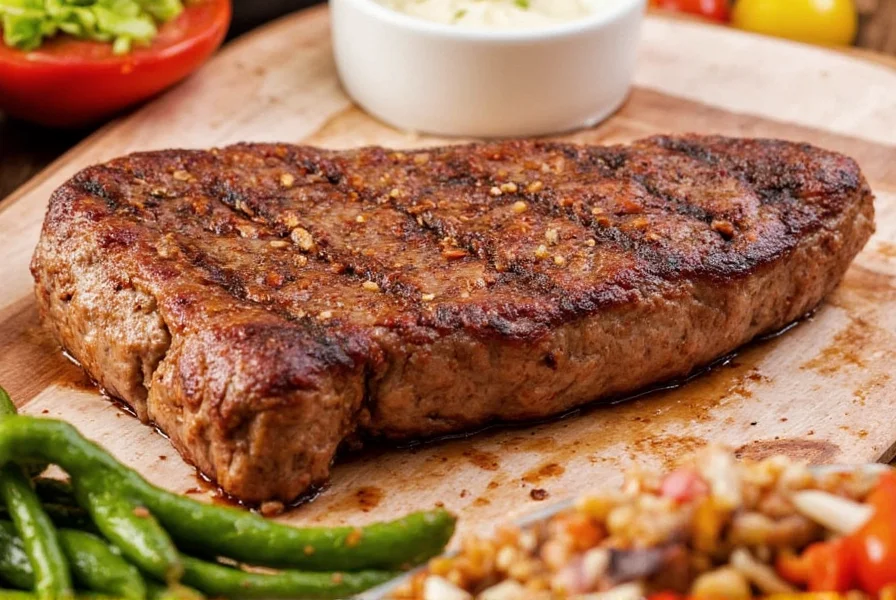Need a quick substitute for ginger powder? You're in the right place. Here are the top 5 alternatives with precise measurements and best uses for any recipe—baking, cooking, or beverages.

| Substitute | Quantity | Flavor Notes | Best For |
|---|---|---|---|
| Fresh Ginger Root | 1 tsp grated = ¼ tsp powder | Pungent, spicy, fresh | Stews, soups, marinades |
| Ground Allspice | ½ tsp = 1 tsp powder | Earthy, clove-like, warm | Baked goods, mulled drinks |
| Ground Cinnamon | 1 tsp = 1 tsp powder | Sweet, woody, aromatic | Oatmeal, cookies, coffee |
| Nutmeg | ½ tsp = 1 tsp powder | Mellow, nutty, sweet-spicy | Custards, creams, potato dishes |
| Cardamom | ½ tsp = 1 tsp powder | Floral, citrusy, bold | Rice dishes, desserts, tea |
1. Fresh Ginger Root
The most authentic substitute for savory dishes
Fresh ginger root delivers the closest flavor profile to ginger powder when you need that signature zesty heat. Use it in wet recipes where texture won't be an issue.
How to Use:
- Use 1 teaspoon grated fresh ginger for every ¼ teaspoon of ginger powder called for in the recipe.
- Best for soups, stews, marinades, and stir-fries.
Pros:
- Natural, vibrant flavor without additives
- Widely available in grocery stores
Cons:
- Not ideal for dry mixes due to moisture content
- Requires refrigeration for freshness
| Substitute | Quantity Equivalent | Flavor Profile | Best For |
|---|---|---|---|
| Fresh Ginger Root | 1 tsp grated = ¼ tsp ginger powder | Strong, zesty, aromatic | Wet dishes like soups, sauces, marinades |
2. Ground Allspice
Best for baked goods and warm beverages
Allspice mimics ginger's warmth with notes of cinnamon, cloves, and nutmeg—perfect for desserts and holiday drinks where sharpness isn't required.
How to Use:
- Use ½ teaspoon allspice for every 1 teaspoon ginger powder.
- Ideal for cakes, cookies, mulled wine, and cider.
Pros:
- Excellent for sweet recipes
- Long shelf life when stored properly
Cons:
- Lacks ginger's distinctive spiciness
- Not suitable for savory dishes
| Substitute | Quantity Equivalent | Flavor Profile | Best For |
|---|---|---|---|
| Ground Allspice | ½ tsp = 1 tsp ginger powder | Warm, spicy, clove-like | Baked goods, holiday drinks |
3. Ground Cinnamon
Top choice for sweet breakfast dishes
Cinnamon provides comforting warmth without ginger's bite—great for recipes where sweetness is the priority.
How to Use:
- Use 1:1 ratio (1 tsp cinnamon = 1 tsp ginger powder).
- Perfect for oatmeal, smoothies, and spiced coffee drinks.
Pros:
- Common pantry staple
- Works well in breakfast foods
Cons:
- Too sweet for savory dishes
- Lacks ginger's sharpness
| Substitute | Quantity Equivalent | Flavor Profile | Best For |
|---|---|---|---|
| Ground Cinnamon | 1 tsp = 1 tsp ginger powder | Sweet, woody, aromatic | Desserts, morning porridge, coffee drinks |
4. Nutmeg
Subtle warmth for creamy dishes
Nutmeg offers a mellow, sweet-spicy flavor that enhances custards and sauces without overpowering other ingredients.
How to Use:
- Use ½ teaspoon nutmeg for every 1 teaspoon ginger powder.
- Best for custards, béchamel sauce, mashed potatoes, and eggnog.
Pros:
- Mild flavor that blends well
- Common in most kitchens
Cons:
- Can turn bitter if overused
- Not ideal for high-heat cooking
| Substitute | Quantity Equivalent | Flavor Profile | Best For |
|---|---|---|---|
| Nutmeg | ½ tsp = 1 tsp ginger powder | Mellow, sweet-spicy | Creamy dishes, holiday desserts, warm drinks |
5. Cardamom
Exotic alternative for global cuisines
Cardamom brings floral and citrusy notes that work beautifully in Indian, Middle Eastern, and Scandinavian dishes.
How to Use:
- Use ½ teaspoon cardamom for every 1 teaspoon ginger powder.
- Perfect for rice dishes, chai tea, and desserts.
Pros:
- Unique aromatic profile
- Used in traditional spice blends like garam masala
Cons:
- More expensive than other spices
- Strong flavor may overwhelm delicate dishes
| Substitute | Quantity Equivalent | Flavor Profile | Best For |
|---|---|---|---|
| Cardamom | ½ tsp = 1 tsp ginger powder | Floral, citrusy, spicy | Desserts, spiced grains, herbal teas |
Choosing the Right Substitute: Quick Guide
Match your substitute to your recipe's needs:
- Savory dishes (curries, stir-fries): Fresh ginger root or cardamom
- Baked goods (cookies, cakes): Allspice or cinnamon
- Creamy dishes (custards, sauces): Nutmeg
- Beverages (chai, mulled wine): Allspice or cardamom
Frequently Asked Questions
What's the best substitute for ginger powder in baking?
For baking, ground allspice is the top choice. Use ½ teaspoon allspice for every 1 teaspoon ginger powder. Cinnamon works well too with a 1:1 ratio, but allspice better replicates ginger's warm complexity in desserts.
Can I use cinnamon instead of ginger powder?
Yes, but only for sweet dishes. Use equal parts cinnamon and ginger powder (1:1 ratio). Cinnamon lacks ginger's spicy bite, so avoid it in savory recipes like curries or stir-fries where ginger's sharpness is essential.
What's the conversion for fresh ginger to ginger powder?
Use 1 teaspoon grated fresh ginger for every ¼ teaspoon ginger powder. Fresh ginger has higher moisture content and less concentrated flavor than dried powder, so you need more volume to match the spice level.
Which substitute works best for curry?
For curry, fresh ginger root is ideal. If unavailable, use cardamom (½ tsp per 1 tsp ginger powder) for authentic Indian flavor. Avoid cinnamon or nutmeg—they'll make the curry too sweet.










 浙公网安备
33010002000092号
浙公网安备
33010002000092号 浙B2-20120091-4
浙B2-20120091-4